INSECTS OF BORNEO
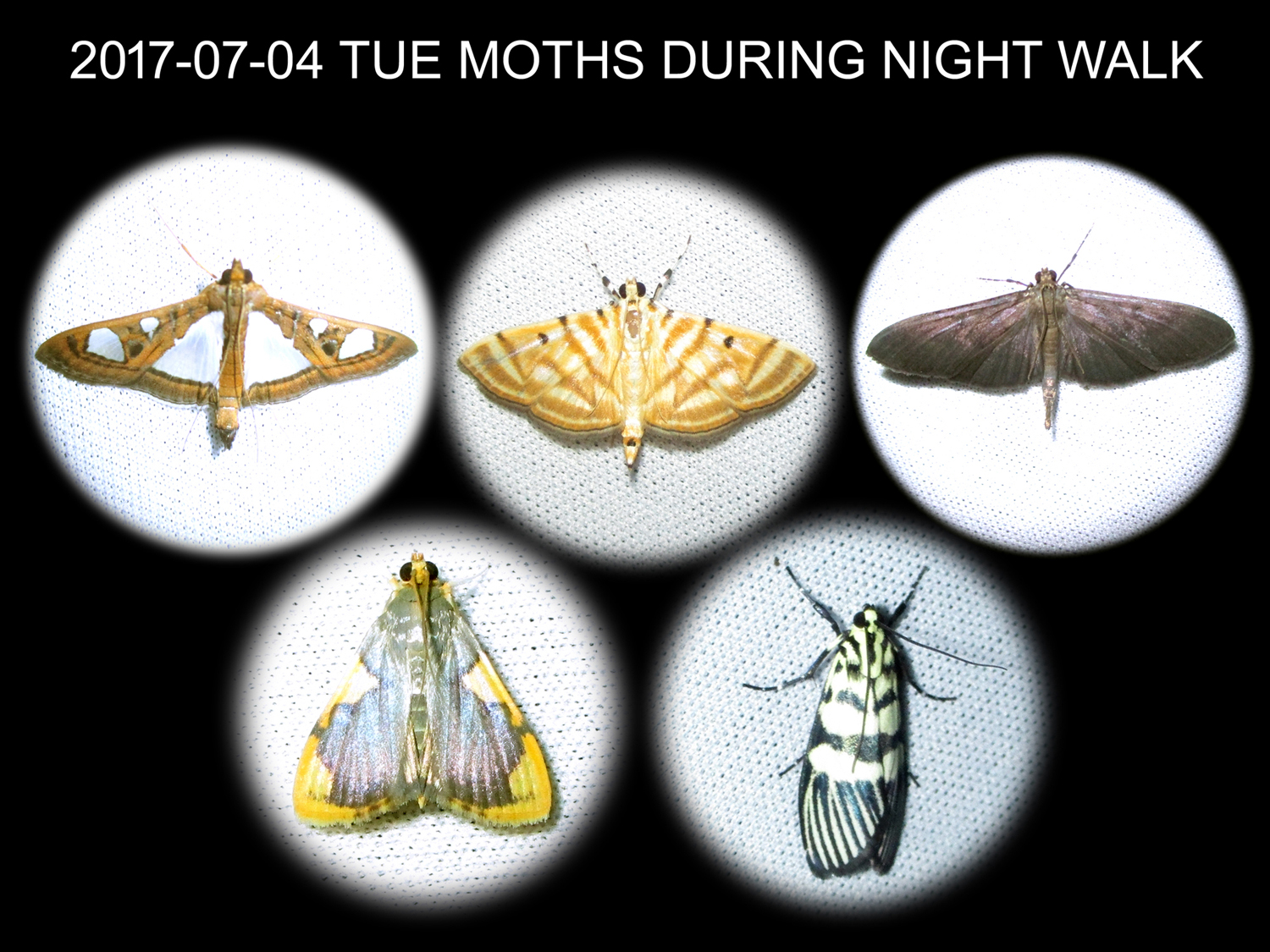
Last Updated on Saturday, 08 May, 2021 06:57:19 AM
Fauna of Borneo > Insects of Borneo
This page contains pictures and information about insects that we found in
Sabah and Sarawak on Borneo Island.
INSECTS OF BORNEO

NERVE-WINGED INSECTS-Neuroptera
神經翅昆蟲
The order Neuroptera is relatively small, containing only about 4,000 known
species. Most members are predaceous, and some species are highly beneficial to
man. Neuroptera of the family Chrysopidae, for example, feed voraciously on such
pests as mites, aphids, corn earworms, and thrips. Included in the Neuroptera
are such com- mon insects as the ant lions, alderflies, Dobsonflies, and
lacewings.
The Neuroptera vary considerably in size and appearance, but their structure is
fairly consistent in most species. Their most distinguishing structural features
are four large transparent or translucent wings, decorated with intricate
patterns of veins and cross- veins. The name Neuroptera means "nerve- winged,"
and refers to these patterns of venation.
Often beautifully colored, the wings are of about equal size and are usually
held over the neuropteran's body when the in- sect is not in flight. Neuroptera
of the small family Coniopterygidae, sometimes called dusty wings, are unusual
in that their wings do not display the intricate venation found in the rest of
the order; as a result, they are difficult to identify.
Most adult neuropterans have mobile heads, chewing rather than sucking mouth-
parts, well-developed mandibles, long multi- segmented antennae, and protruding
eyes. In a few species the eyes are missing. The thorax varies in shape
according to the species. The front legs are strong and used to grasp the
insect's prey. The hind legs are often extremely long.
The Neuroptera undergo complete meta- morphosis. The larvae are elongated and
somewhat flattened, and are found on the ground, in topsoil, and in trees. The
larvae of ant lions and lacewings are equipped with long, sickle-shaped jaws. In
these Neuroptera the mandibles and maxillae are grooved in such a way that when
they are held together they form two long tubes. The larvae stab their prey with
these tubes and then inject the captured animal with a toxic secretion. The
tubes are then used to suck the body fluids of the conquered prey. In some
species, the larvae are parasitic. Larvae of the family Mantispidae, for
example, are found in the egg sacs of spiders.
The larvae of some species pupate in cells in the topsoil, but most weave silken
co- coons. Unlike most other insects, neuropterans spin silk from material
secreted by the excretory Malphighian tubes rather than from material produced
by modified salivary glands. The Neuroptera spend most of their lives as larvae.
The adults have a brief life span, and are usually seen at dusk or flying around
lights during the night. The males emit odors in order to attract the females.
An exotic neuropteran is Necrophilus arenarius. Its larvae develop in the
galleries of the pyramids, and find prey there.
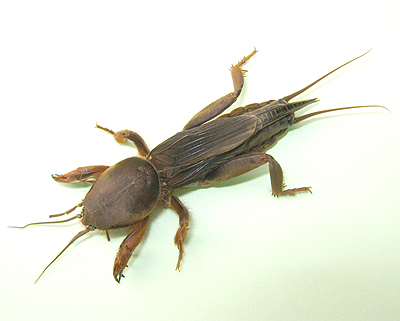
Cricket
Crickets, family Gryllidae, are related to grasshoppers, and more closely
related to katydids or bush crickets (family Tettigoniidae).
They have flattened bodies and long antennae.
There are about 900 species of crickets. They are often confused with
grasshoppers because they have a similar body structure including jumping hind
legs.
Crickets are harmless.
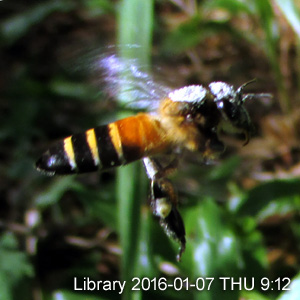
The Bees
A diverse and abundant insect group in Sabah.
There are five species of honeybees in Sabah, of which two are common among the
local community.
Honey produced by the cultured honeybees and also the giant wild honeybees is
very much sought after by the local people as health food. The brood is also
claimed to be highly nutritious, and is often taken raw, or cooked in porridge
or rice.
Honeybee breeding in Sabah is practiced by the Rungus community at northern
Sabah and also the Kadazandusun community at the Kinabalu foothills. The giant
wild honeybee often nests on the ‘mengaris’, the tallest tree species in Sabah.

A female Ceratosolen fusciceps, the fig wasp that pollinate
Ficus racemosa fig tree species widely distributed from India to Australia.
Fig wasps are wasps of the superfamily Chalcidoidea which spend their larval
stage inside figs.
There are two groups of Fig Wasps the Pollinators and Non-pollinators:
1- Pollinators in the family Agaonidae,
2- Non-pollinators belong to several families within the superfamily
Chalcidoidea,
Pollinating fig wasps are gall-makers (膽囊製造者), the remaining types either make their own galls or usurp 侵佔 the galls of other fig wasps
Most wasps have two pairs of wings--one pair of larger front wings and one pair of smaller hind wings.
Most female wasps have a stinger that contains venom. As opposed to bees, most wasps do not have much hair on their bodies.
More about FIG WASPS OF BORNEO
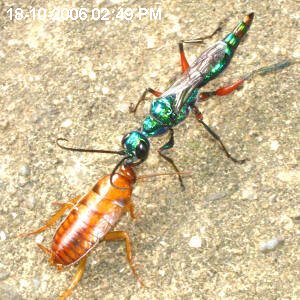
More about WASPS OF BORNEO
----------------------------------------------
-------------------
---------------------------------
----------------------------
----------------------
THE BEETLES,
BEES,
WASPS AND ANTS
Beetles are second to butterflies and moths in terms of popularity.
However, beetles constitute the largest and most diverse order of insects. The
body is usually armoured with its hard forewings and some are often brilliantly
coloured. The largest in Sabah, a giant longhorned beetle can grow up to 100 mm.
Many of the larger beetles are attracted to light and thus can be easily spotted
at various nature resorts in Sabah, such as Kinabalu Park, Poring Hot Springs
and Danum Valley. Among the common ones are the three-horned beetles, stag
beetles and also the long-horned beetles.
The bees, wasps and ants are yet another diverse and abundant insect group in
Sabah.
You may say that ants are small and insignificant. So, there’s nothing special
to observe. Perhaps it is true to a certain extent, to appreciate the beauty of
this tiny living creature. However, tourists who walk in the rainforests would
not have missed the giant forest ant (otherwise you wouldn’t have been into the
Sabah rain forest!). It is one of the largest ant species in the world! During
daytime, some worker ants can be observed foraging solitarily on the ground. It
is actually a nocturnal species where thousands of them would march up to the
forest canopy in search of food. The best time to observe this is at dusk, at
the base of a fairly large dipterocarp tree in the forest such as at Danum
Valley, Sepilok Forest Reserve or Poring Hot Springs.
Alderflies-Sialidae
Dobsonflies and
Fishflies-Corydalidae
Snakeflies-Raphidiidae
Ithonids-Ithonidae
Brown
Lace-wings-Hemerobiidae
Mantid
Flies-Mantispidae
Osmylids-Osmylidae
Common
Lacewings-Chrysopidae
Ant
Lions-Myrmeleontidae
Owlflies-Ascalaphidae

An Stephanidae wasp (Crown Wasp) with red head, Borneo Island
Female
Body length = 27mm
Ovipositor length = 32mm
Total body length = 59mm
The intimidating female Stephanidae Wasp has a tremendously long ovipositor for
egg-laying, not for stinging.
2016-10-17 BANDAR SRI INDAH
RELATED TOPICS

Animal in Sabah including wildlife
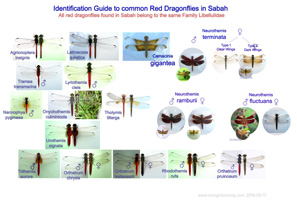
Common dragonflies in Borneo Island
(Information of Dragonflies of Sarawak, Sabah, Brunei and Kalimantan)
INTRODUCTION TO THE DAMSELFLIES OF SABAH, BORNEO ISLAND
|
|
Insects of Borneo |